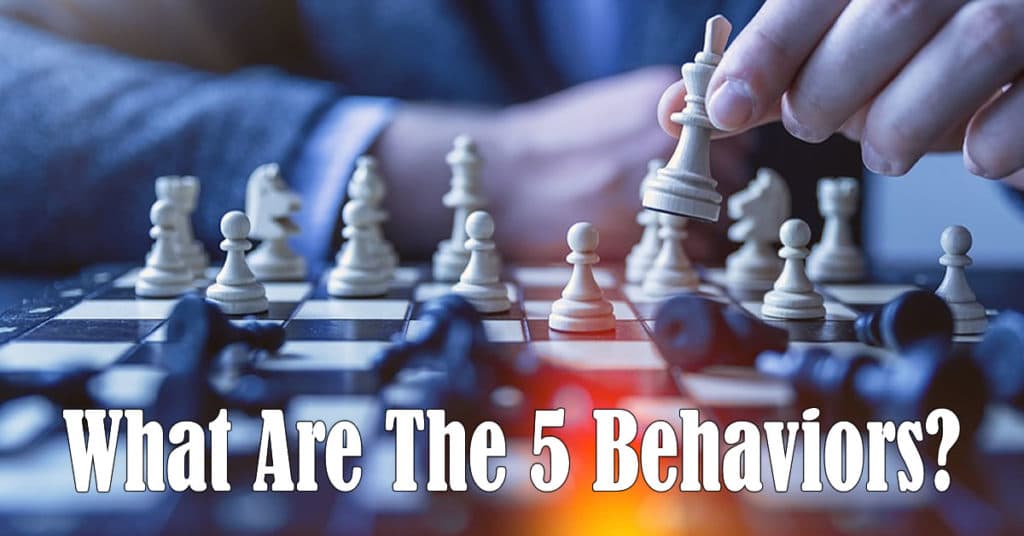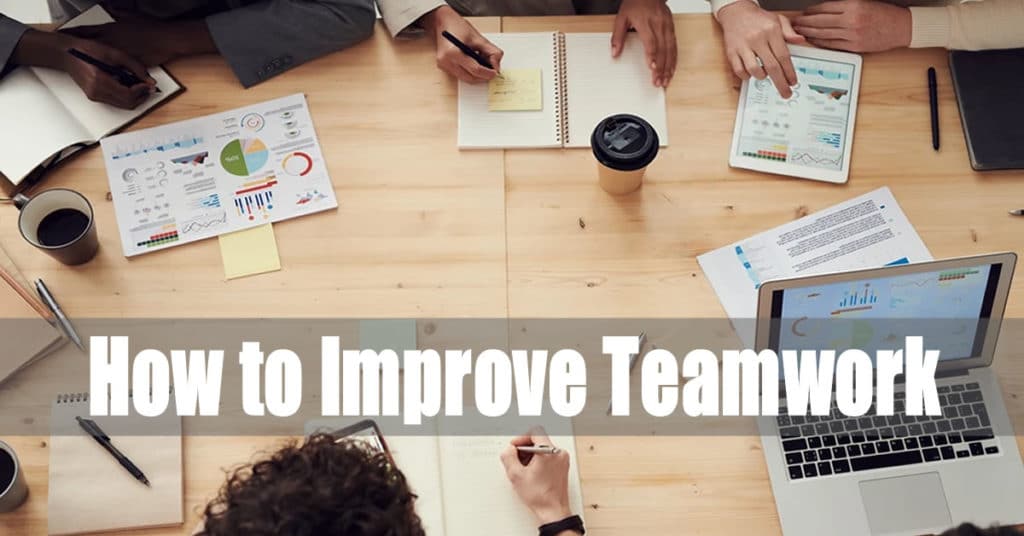Comprehending and interpreting behavior is fairly complex, and misunderstandings can cause a wide range of negative outcomes in various scenarios. When it comes to understanding the different behavioral traits of various individuals, the Wiley Brand has plenty of information to offer. So, what are the five behaviors?
The Five Behaviors Model focuses on trust, conflict, commitment, accountability, and results. The model is in the form of a pyramid, with trust laying the foundation and results being the point of the triangular model. Each behavior or level in the model has various specifics for applications and each behavior builds upon the next.
While the Five Behaviors Model focuses on teamwork, it includes many additional aspects for learning, personal growth, and long-term behavior or culture changes. Join us as we discuss this fascinating and impactful behavior model to find out more.
What Is the Five Behaviors Model?
The Five Behaviors Model is a powerful program that is used by numerous individuals and teams worldwide. It aims to help people interpret and understand various behaviors as individuals and as a team, with the hope of creating more unified, collaborative, and cohesive teams on a broad scale.
Who Created the Five Behaviors Model?
The Five Behaviors Model was designed as a result of the partnership between Wiley Workplace Learning Solutions and Patrick Lencioni, a best-selling author. Lencioni’s groundbreaking book, The Five Dysfunctions of a Team, was released in 2002 and has reached 3.2 million inquisitive people since its initial debut.
Lencioni’s books laid the foundations for the Five Behaviors Model and still acts as a cornerstone for organizational or teamwork development in various capacities. Since the Five Behaviors Model was created in partnership with Wiley, it also comprises the influence and power of the Everything DiSC model.
By merging these two powerful models and their unique but corresponding concepts, Wiley and Lencioni’s partnership has managed to bring much more to the table. The Five Behaviors Model also helps individuals and team members learn about themselves and their teammates in addition to key behavioral insights.
What Are the Five Behaviors?
The Five Behaviors Model comprises a pyramid model. At the base is trust, followed by conflict, commitment, accountability, and finally results at the very point of the pyramid. Each segment of the pyramid model or each behavior has importance within the grand scheme of teamwork and specific details as to how it should be considered in various contexts.
Trust
The foundation of the Five Behaviors Model is trust, both within the pyramid model and in a metaphorical sense. None of the other behaviors or pillars would be effective without trust. It is vital for team members to trust one another and be transparent, genuine, and honest. This behavior fashions a safe space that builds vulnerability-based trust.
Great teams…
- Trust one another on a fundamental, emotional level
- Are vulnerable with each other about their weaknesses, mistakes, and fears
- Can be completely open with one another, without filters
Conflict
Conflict can often be shrouded with negativity, but it is, in fact, a healthy part of teamwork. This pillar dictates that there should be a healthy amount of conflict within all teams. With trust as a foundation, individuals will be free to engage in debates regarding ideas and opinions while respecting each other’s differences.
Great teams…
- Are not afraid to engage in passionate dialogue around issues
- Do not hesitate to disagree with, challenge, and question one another to find the best answers
Commitment
The inclusion of healthy conflict leads to commitment, as the manner in which ideas and opinions are discussed to spark decision-making processes will greatly impact the commitment on each team member’s part. Team members will feel more acknowledged and respected if they can weigh-in, making it more likely for individuals to buy-in to any decisions made by the team.
Great teams…
- Engage in conflict to ensure that nothing has been left unsaid
- Achieve buy-in around important decisions
Accountability
If all of these behaviors are applied appropriately and effectively, it will allow each team member to be held accountable for their part in the decision or plan of action. It is far more likely for each individual to stay on track when there is cohesiveness and a clear plan of action to follow.
Great teams…
- Hold one another accountable for adhering to the team’s commitments
- Don’t rely on the team leader for accountability; go directly to their peers
Results
Results are the ultimate goal, which is why this behavior segment is the last of the five behaviors and also the very crux of the pyramid. Results can be unlocked or achieved in a far more effective and simplified manner with the Five Behaviors Model’s previously mentioned principles: Trust, Conflict, Commitment, and Accountability.
Great teams…
- Set aside their individual needs and focus on what is best for the team
- Emphasize collective results that define team success
What Are the Benefits of the Five Behaviors Model?
Using the Five Behaviors Model as a guide to learning about key behaviors as individuals and teams offer numerous benefits, which will likely include unique experiences for each person. Some of the most notable benefits and learning experiences include the following:
- The Five Behaviors Model helps team members strengthen their existing relationships and create effective relationships where there are none.
- The Five Behaviors Model helps individuals of various backgrounds and traits work together more effectively.
- The Five Behaviors Model’s principles and teachings ultimately aid in achieving greater final results.
- The Five Behaviors Model is comprehensive and applicable to all fields, making this model useful for any employee.
- The Five Behaviors Model teaches behaviors that will ultimately redefine teamwork and collaboration across any organization.
- The Five Behaviors Model aids in creating cultural change within the workplace, which will inevitably have a positive impact on the entire company.
- The teachings offered by the Five Behaviors Model are realistic, timeless, and practical, making it easy for individuals to apply learnings in everyday life and within ever-changing environments.
- The Five Behaviors Model increases engagement and productivity throughout all areas of the principles’ applications.
- The Five Behaviors Model aids in creating an enjoyable and satisfying team culture dynamic throughout the workplace, which will lead to increased morale and results.
How Does the Five Behaviors Model Work?
The Five Behaviors Model works through various programs and learning experiences. The learning experience entailed by the Five Behaviors Model is memorable, deep, and robust, and is applicable to individuals from varying backgrounds and career paths. The Five Behaviors Model report includes the following:
- Personalized results for both individuals and team
- Strong visuals to help participants remember the key messages
- The feedback that’s context-specific and detailed
- Comprehensive tips and strategies personalized for your team to help improve team effectiveness and collaboration
- Action plans to help continue the lessons
By using a combination of various teaching materials and customization, the Five Behaviors Model program can be made effective and enjoyable for various teams and individuals. Various measures and approaches are used to ensure that learning is thorough over time.
Customized and Guided Learning Journeys
The Five Behaviors Model learning experience is preferably led by a trained facilitator. The network of Authorized Partners and Certified Practitioners comprises individuals who are proficient in providing impactful experiences to organizations worldwide. The trained facilitator would be able to customize the learning journey and utilize Lencioni’s Five Behaviors Model appropriately.
Computer Adaptive Assessments
To start, each team member will need to complete a computer-adaptive assessment. A comprehensive profile and group result will be produced from the information that is gathered from these assessments.
Personalized Profile
Once the profile has been created, team members can begin improving effectiveness, collaboration, and cohesiveness. The profile itself is a personalized journey tailored for the needs of those who completed the computer-adaptive assessment.
Both the assessment and the profile-creating procedures go through rigorous testing to ensure quality learning experiences. This profile will help the team see where they stand within the Five Behaviors Model’s framework, combined with impactful classroom or virtual learning sessions to ensure positive and lasting team culture and dynamic transformation.
Continuous Learning
As a part of the Five Behaviors Model program, individuals will have access to follow-up resources as well. These additional learning resources will help make the lessons more impactful in the long term, making it much easier to create cultural change within the organization as a whole.
There may be some variations to the implementation of the Five Behaviors Team Development program. In some cases, the program may be facilitated as a one-day team retreat session. These sessions are designed to be quick, relevant, practical, and effective by focusing on the primary areas in need of improvement.
Is The Five Behaviors Model Only For Team Learning?
While there is a primary focus on teamwork and collaborative learning journeys, the Five Behaviors Model is still applicable for personal growth as well. The Five Behaviors Personal Development program has been created to assist any employee in contributing toward collaboration and teamwork.
The end goal is still based on improving cohesiveness, unified cultures, and more effective teams in the long run. The Five Behaviors Personal Development program aims to work with one employee at a time. This approach works especially well for matrix organizations, project teams that are established or changed quickly, and employees working on cross-functional teams.
What Other Five Behaviors Programs Are There?
Those who have contributed to the design and implementation of the Five Behaviors programs have taken great care to ensure there is a program type that is suited for everyone. Other available programs include the following:
- Team coaching
- Individual coaching
- Follow-up team sessions
- Progress assessment
- Comparison reports between two team members
- Group culture reports
The Five Behaviors Model has become incredibly popular amongst countless individuals and organizations worldwide, and for good reasons. While the Five Behaviors Model was created in partnership with Lencioni, it is still part of the Wiley Family. It is fueled by over 200 years of in-depth research and publications, making it one of the most comprehensive and effective teamwork models to date.




